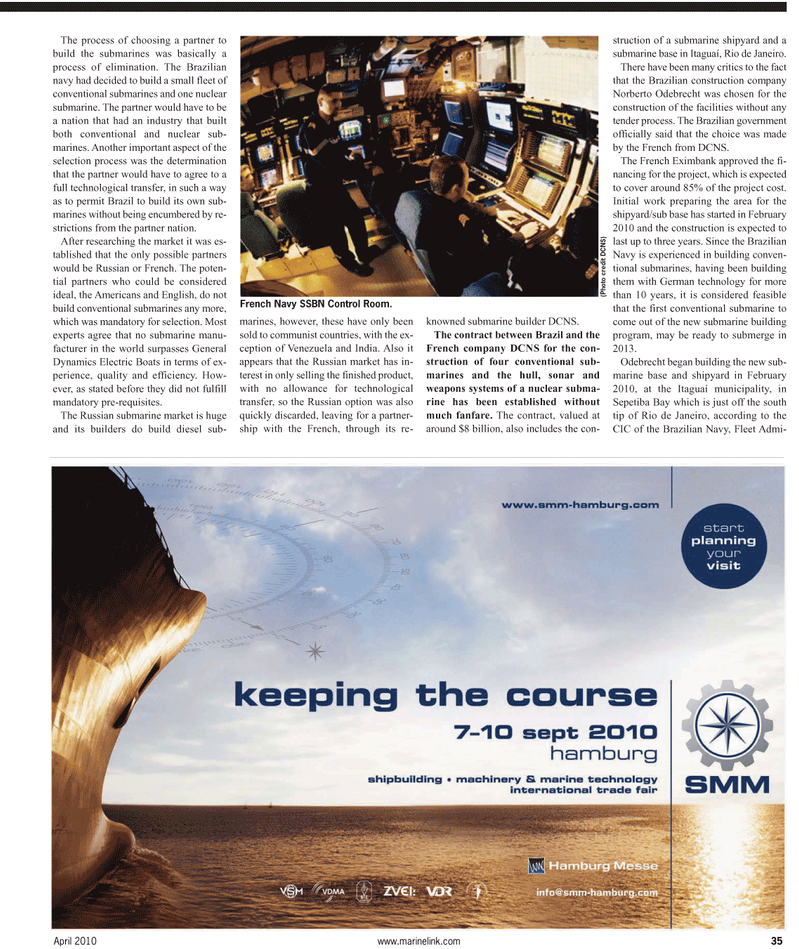
Page 35: of Maritime Reporter Magazine (April 2, 2010)
Read this page in Pdf, Flash or Html5 edition of April 2, 2010 Maritime Reporter Magazine
April 2010 www.marinelink.com 35
The process of choosing a partner to build the submarines was basically a process of elimination. The Brazilian navy had decided to build a small fleet of conventional submarines and one nuclear submarine. The partner would have to be a nation that had an industry that built both conventional and nuclear sub- marines. Another important aspect of the selection process was the determination that the partner would have to agree to a full technological transfer, in such a way as to permit Brazil to build its own sub- marines without being encumbered by re- strictions from the partner nation.
After researching the market it was es- tablished that the only possible partners would be Russian or French. The poten- tial partners who could be considered ideal, the Americans and English, do not build conventional submarines any more, which was mandatory for selection. Most experts agree that no submarine manu- facturer in the world surpasses General
Dynamics Electric Boats in terms of ex- perience, quality and efficiency. How- ever, as stated before they did not fulfill mandatory pre-requisites.
The Russian submarine market is huge and its builders do build diesel sub- marines, however, these have only been sold to communist countries, with the ex- ception of Venezuela and India. Also it appears that the Russian market has in- terest in only selling the finished product, with no allowance for technological transfer, so the Russian option was also quickly discarded, leaving for a partner- ship with the French, through its re- knowned submarine builder DCNS.
The contract between Brazil and the
French company DCNS for the con- struction of four conventional sub- marines and the hull, sonar and weapons systems of a nuclear subma- rine has been established without much fanfare. The contract, valued at around $8 billion, also includes the con- struction of a submarine shipyard and a submarine base in Itaguaí, Rio de Janeiro.
There have been many critics to the fact that the Brazilian construction company
Norberto Odebrecht was chosen for the construction of the facilities without any tender process. The Brazilian government officially said that the choice was made by the French from DCNS.
The French Eximbank approved the fi- nancing for the project, which is expected to cover around 85% of the project cost.
Initial work preparing the area for the shipyard/sub base has started in February 2010 and the construction is expected to last up to three years. Since the Brazilian
Navy is experienced in building conven- tional submarines, having been building them with German technology for more than 10 years, it is considered feasible that the first conventional submarine to come out of the new submarine building program, may be ready to submerge in 2013.
Odebrecht began building the new sub- marine base and shipyard in February 2010, at the Itaguaí municipality, in
Sepetiba Bay which is just off the south tip of Rio de Janeiro, according to the
CIC of the Brazilian Navy, Fleet Admi-
French Navy SSBN Control Room. (Photo cr edit DCNS)

 34
34

 36
36
